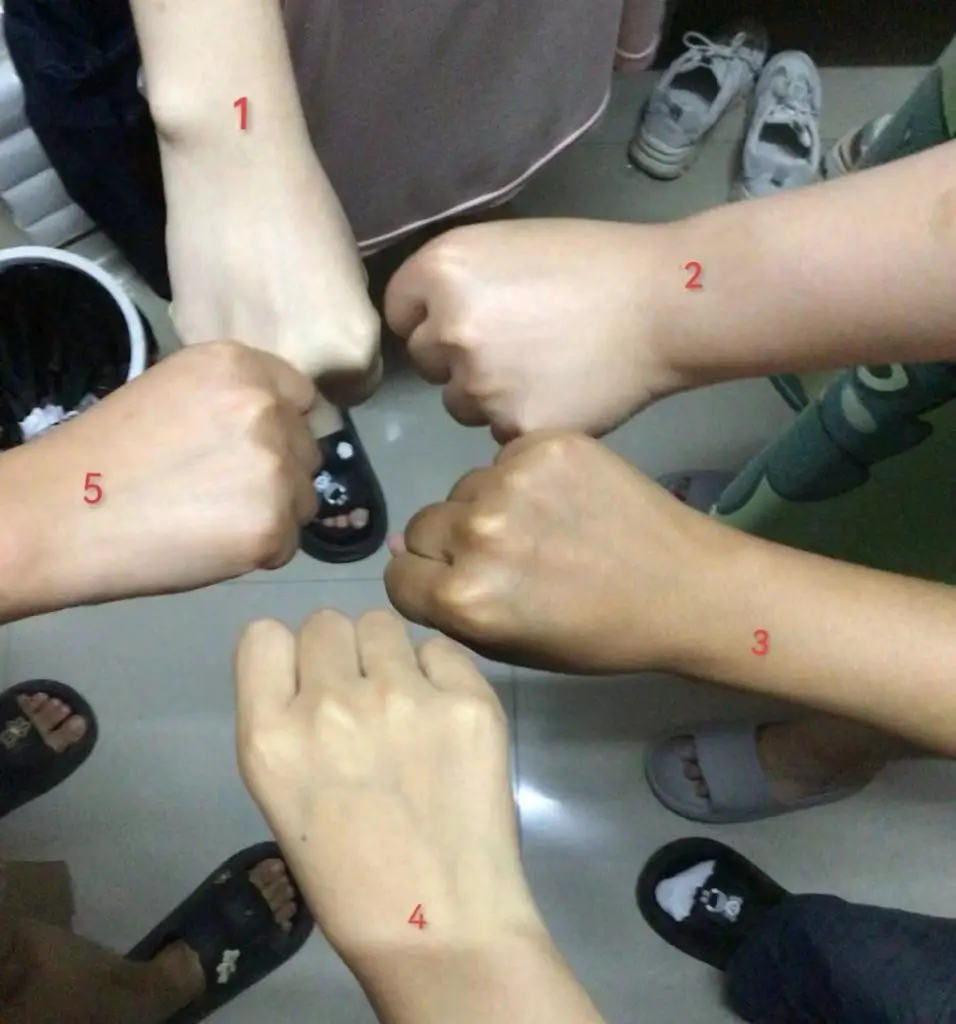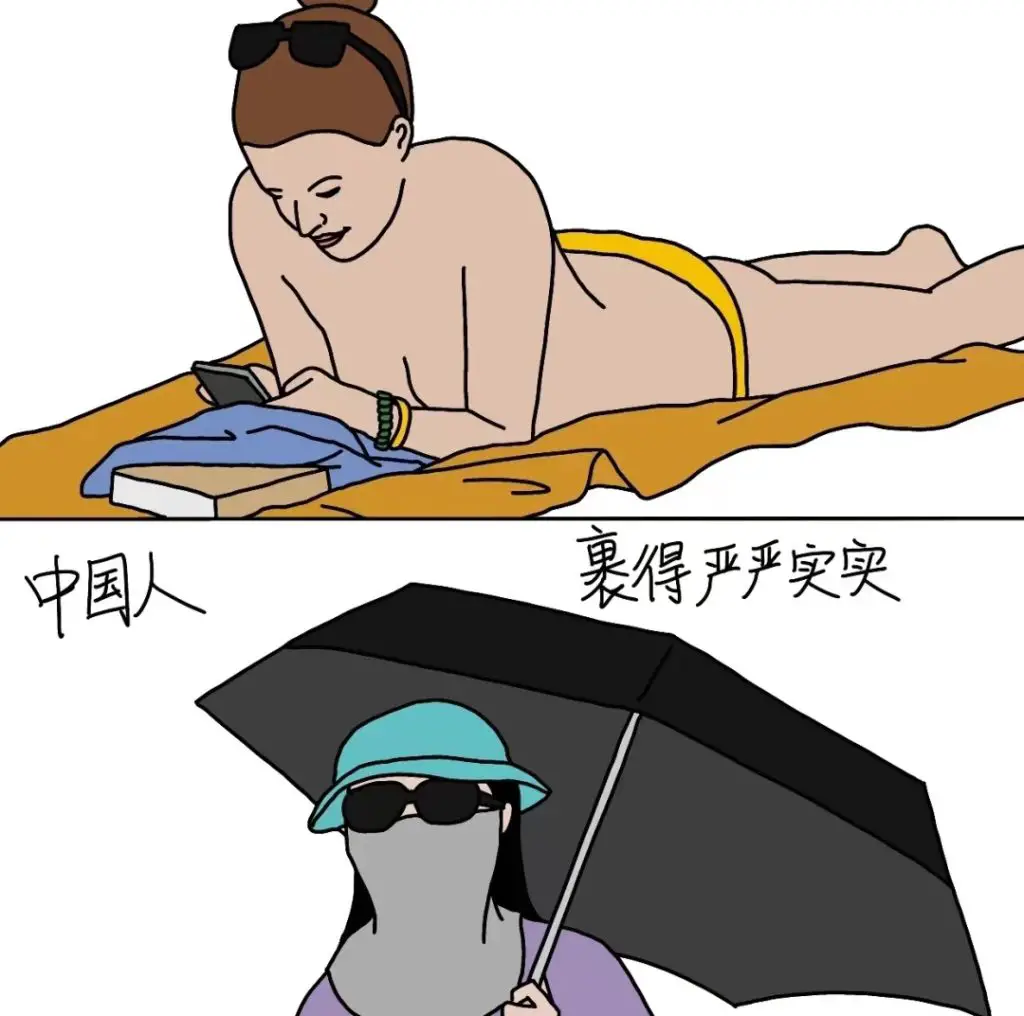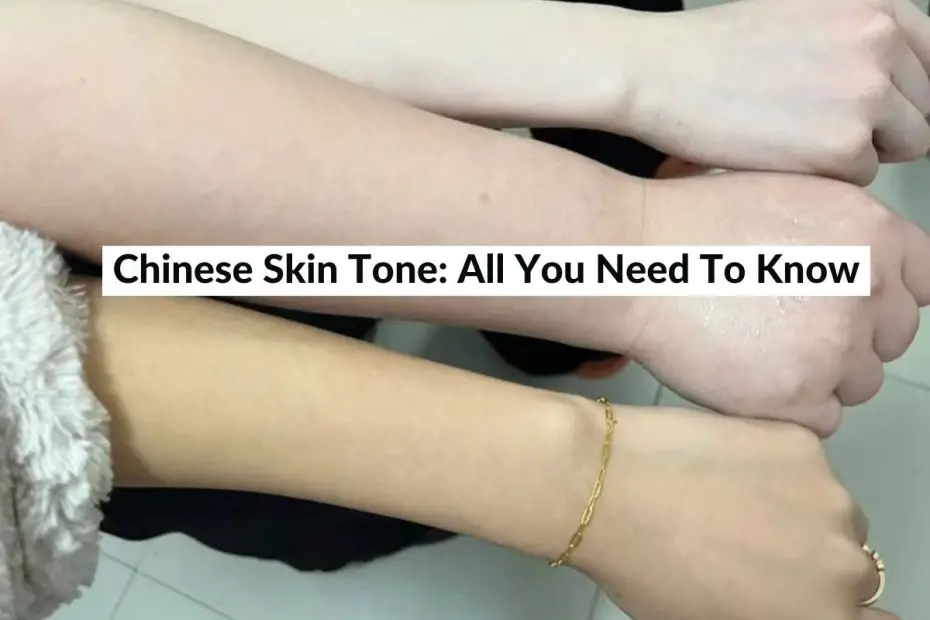Get ready to learn about Chinese skin tones – the beautiful colors that paint the people of China! Just like how we all have different favorite colors, Chinese people have a wide range of skin shades.
Imagine a big box of crayons with colors from dark to light. But did you know that our skin color is like a secret message from our genes? The sun also plays a part – it gives some people a sun-kissed look.
And China’s big size and history make the skin colors even more exciting. So, let’s take a fun trip into the world of Chinese skin tones!
Chinese Skin Tone Name

| Ethnic Group | Skin Tone Name |
|---|---|
| Va (Southeast Asia) | Dark (Negritos) |
| Majority | Light Brown to Pale White |
| Southern Han Chinese | Light Brown |
| Tibetans | Light Brown |
| Northern Han Chinese | Pale White |
| Other Northern Minorities | Pinkish White |
The skin tones of various Chinese ethnic groups exhibit a broad range from dark to light, with some comparisons to other global ethnicities. While the majority falls within the spectrum of light brown to pale white, there are notable distinctions between Southern and Northern Han Chinese as well as various ethnic minorities.
Southern Han Chinese, Tibetans, and many Southern ethnic minorities tend to have lighter brown skin tones, while Northern Han Chinese and most Northern ethnic minorities lean towards paler white skin tones.
Additionally, several groups, such as Northern Han, Hui, Weiwuer/Uyghurs, Tajike/Pamiri, and Eluosi/Russian, often display pinkish white skin.
Wondering why Chinese have good skin? And what skin care products do they use? Check the reasons and secret products here.
Dark Skin Chinese 👩🏾
Can you be dark toned and 100% Chinese? Yeah! And Why is that??? 🧐
- Genetics: Human skin color is determined by a complex interplay of genetics. The presence of certain genes, such as those related to melanin production, influence the amount and type of melanin in the skin. Melanin is a pigment responsible for skin, hair, and eye color. Different genetic variations can lead to a range of skin tones within a single population.
- Geographic Diversity: China is a vast and geographically diverse country, encompassing a wide range of climates and environmental conditions. People living in regions with more sunlight tend to have darker skin, as melanin provides protection against the harmful effects of ultraviolet (UV) radiation from the sun. This is an adaptation to reduce the risk of skin damage and skin cancers caused by excessive UV exposure.
- Historical and Cultural Factors: Throughout history, China has had interactions with various neighboring cultures and ethnic groups, leading to some degree of genetic exchange. This can contribute to the diversity of skin tones within the Chinese population. Additionally, factors such as social status and cultural preferences for lighter skin have influenced perceptions of beauty and skin care practices, which in turn can affect skin color perceptions.
- Migration and Mixing: China’s history is characterized by migration and movement of people across regions. Over time, these migrations have led to mixing of different genetic backgrounds, contributing to the variation in skin tones. People with different ancestral backgrounds might exhibit diverse skin colors.
- Admixture: Admixture refers to the process of different ethnic groups interbreeding, leading to a blending of genetic traits. China’s long history of cultural exchange and migration has contributed to admixture, which can result in a wide range of appearances, including skin color.
Is the Skin Tone of the Chinese People Considered Fair or Yellow?

Chinese people are not all the same. They come in many different shades and tones, just like the wide range of people with Chinese heritage.
Some Chinese individuals have fair skin, some have a pinkish hue, while others may have yellowish or beige tones. Some have a bronze complexion, some an olive one, and some can be quite dark and tan. There are even Chinese people with albinism, who might have a skin tone that’s closest to what is typically considered “white.” Various appearances exist, despite the common stereotypes.
The reason for this diversity is that China is a huge country with many different regions, and it’s home to various ethnic groups beyond the dominant “Han” Chinese majority. Some see the term “Han” as more of a classification rather than a completely uniform ethnic group.
You can find plenty of examples that show how Chinese people can look quite different from one another, just like any other group of people around the world. Some naturally have tanned skin, while others don’t, and everyone goes about their lives as usual. Some people even like having a mix of looks, ranging from pale to tan, depending on their personal preferences.
Japanese VS Chinese Skin Tone
| Aspect | Japanese Skin Tone | Chinese Skin Tone |
|---|---|---|
| Variability | Wide range of skin tones | Varied skin tones |
| Cultural Beauty Ideals | Embraces diverse beauty standards, including tanned skin and creative expressions | Prizes fair skin as a symbol of wealth; trend towards lighter skin |
| Cosmetic Practices | May use parasols and “arm socks” to protect from UV rays | Demand for whitening products due to beauty standards and cultural influence |
| Country vs. Individual | Generally fair skin tone as a preference | Wide range of skin tones based on geography and regional diversity |
| Urban-Rural Divide | Urban areas tend to favor fair skin, rural areas may have more variation | Tier 1 cities often associate with fair skin; variation in Tier 2 and 3 cities |
| Influence of Pop Culture | Diversity celebrated, tanned idols accepted | Hallyu wave increasing demand for whitening products |
| Natural Factors | Evolutionary effect on skin color due to proximity to equator | Regional diversity contributes to varied skin tones |
| Makeup Usage | More makeup usage, contributing to a perception of lighter skin | Varies, generally less makeup usage compared to Japanese |
| Genetic Variation | Genetic diversity contributes to a range of skin tones | Genetic diversity leads to a variety of skin tones |
| Historical Significance | Ancient cultural influences on beauty standards | Historical perspective on wealth and labor impacting skin tone |
In Japan, a diverse range of beauty standards is embraced, celebrating tanned skin and creative expressions. Some Japanese individuals even utilize parasols or “arm socks” to shield their skin from harmful UV rays. Meanwhile, China’s immense size gives rise to a spectrum of skin tones, with fair skin often linked to prosperity in urban areas like Shanghai.
However, the recent boom of prosperity has led to varying skin tones, particularly in Tier 2 and 3 cities. The popularity of the Korean Hallyu wave in China has also heightened the demand for beauty whitening products. Skin color distinctions in both countries are influenced by cultural factors, regional diversity, and trends.
How to Discuss Skin Color in Chinese

Talking about skin color can be challenging in any language, as it’s easy to unintentionally offend someone. In Chinese, there are ways to approach this topic respectfully and appropriately. Here are some guidelines and vocabulary options for discussing skin color in Mandarin:
1. Avoid Aggressive Terminology:
When discussing skin color, it’s best to avoid using terms like “人” (person) after a color descriptor, as it can come across as aggressive or categorizing.
2. Inappropriate to Say:
Certain terms should be avoided due to their offensive nature:
- “黑人” (hēi rén) – black person
- “黄人” (huáng rén) – yellow person
3. Appropriate to Say:
It’s acceptable to use terms that describe skin colors without offending:
- “白色” (báisè) – white skin color
- “白子” (Báizǐ) – for people with albinism
- “暖艳” (Nuǎn yàn) – warm color
- “棕色” (zōng sē) – brown
- “巧克力色” (qiáokèlì sè) – chocolate brown
- “咖啡色” (kāfēi sè) – coffee brown
- “亚裔” (Yà yì) – Asian heritage
- “非洲裔” (fēizhōu yì) – African heritage
4. Asking for Description:
When discussing someone’s skin color, you can ask them how they would prefer to describe it in Chinese. This can lead to a respectful and engaging conversation.
5. Advanced / Poetic Options:
For more nuanced descriptions, you can use terms like:
- “米白色” (mǐ bái sè) – white with a slightly beige tone
- “小麦色” (xiǎo mài sè) – brown skin like whole wheat flour
- “古铜色” (gǔ tóng sè) – antique brass, bronze
6. Negative Contexts:
In negative contexts, certain terms describe unhealthy or negative appearances:
- “苍白” (cān bái) – pale white
- “灰暗” (huī àn) – gloomy grey
- “蜡黄” (là huáng) – wax yellow
Remember, when discussing skin color, it’s important to approach the topic with sensitivity and respect, and to be open to the preferences of the individuals you are conversing with. Language can unite or divide us, so choosing words carefully can create a more inclusive and understanding environment.
FAQs:
What is the most common skin color in China?
The most common skin color in China varies across a range of tones from light to medium, with a prevalence of light to light-medium skin tones.
Is Chinese skin tone warm or cool?
Chinese skin tones can vary, but generally, they are considered warm. This means that the undertones of Chinese skin tend to lean towards yellow or golden hues.
What are the characteristics of Chinese skin?
Characteristics of Chinese skin include a tendency towards a warmer undertone, with varying levels of melanin content.
Chinese skin can be sensitive to environmental factors, and it may be prone to issues like hyperpigmentation and uneven skin tone.
Additionally, due to factors like diet and genetics, many Chinese individuals have a predisposition to maintain a youthful appearance as they age.


